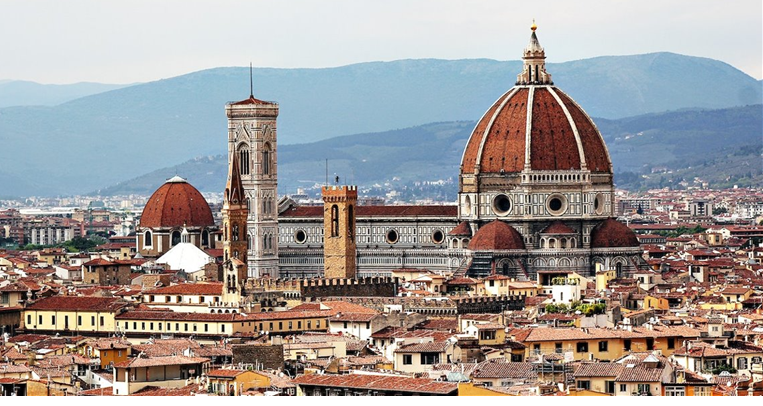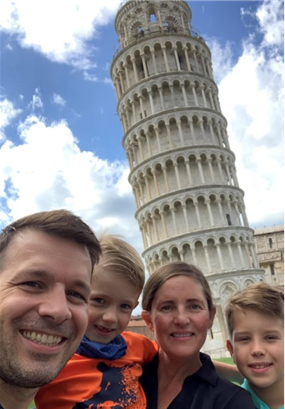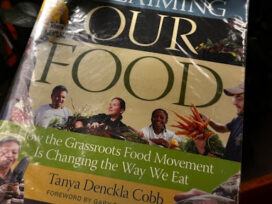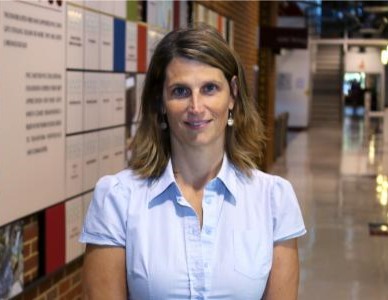
Piedmont Professor Spends a Year in Florence, Italy
The Museo Galileo in Florence — dedicated to the famous astronomer, Galileo, and home to one of the world’s major collections of scientific instruments — hosted our very own Professor of Biology Dr. Anne Allison during her year-long research sabbatical on scientific literacy and philosophy. On Oct. 4, she gave a presentation about what living in Florence for so long was like.
Allison’s first time traveling independently was a spring break trip to Florence in 1996. She went to Italy again in 2005 and 2012. With the pandemic winding down and Allison overdue for a sabbatical, she decided on Florence because of her long history with the country and lifelong dream of living abroad.

Photo courtesy of Anne Allison
She and her family lived outside of the tourist areas of Florence, which immediately made this experience different from her previous trips. Three-story buildings box in one lane roads with sidewalks a foot wide. They had no car, opting to avoid the hassle of insurance and gas. Florence is a very walkable city; it was only a 30 minute walk to the museum from their apartment. Allison learned the area well enough to feel more like a resident than visitor. “This was a point of pride for me. After living there a few months, the Italian tourists — from Italy but not Florence — would start asking me for directions,” she said.
Their apartment was lovely, but antiquated. It had a tiny kitchen, dubbed the “one-butt kitchen” for its single stool that was all its seating. The oven was christened the “easy-bake,” in reference to its small size. Turn on too many appliances and the power to the whole apartment would shut off. The family hung all their laundry on clotheslines to dry, which is common in Florence. Immigration paperwork made it a grueling bureaucratic process to get to this point, Allison said, “But then you wake up one day, and you’ve been there a few weeks, and your jet lag has gone, and you realize: Oh my God, this is where I live. And it’s all worth it.”
The museum is housed in Palazzo Castellani, a building constructed in the 11th century. It sits “in the shadow of” the Duomo di Firenze, the most famous building in the city. If you’ve lived in the U.S. your entire life, it can be easy to forget the sheer depth of human history. In Italy, that history is inescapable. “There are so many ancient artifacts that they are literally just there, on the ground,” Allison said about Rome, which she took her family to see for American Thanksgiving.
She showed pictures of laundry lines hanging between centuries-old apartment buildings. “There are just these layers and layers and layers of history. And you think something is old, and then there is something older, and something older, and something older again,” she reflected. “You just have these buildings that are not necessarily from the same time period. And then folks are clearly living here, doing their laundry, and just going about life.”
The food is one of the main highlights of any stay in Italy. Italians have a table culture foreign to many Americans. “Family. Food. Long meals together. This is something we did a lot of,” Allison said. The longest was a five-hour lunch to celebrate the end of the fall soccer season. Grocery stores had entire aisles overflowing with olive oil and pasta. With inflation affecting people the world over, Allison would sometimes turn on the news to hear about citizens outraged that pasta had gone from 80 cents to a euro per kilogram.
Allison and her family arrived back at the same train station that they left a year prior. “We might have arrived with a certain amount of trepidation and fatigue,” she said. “We all felt excited — sad to leave Florence, but excited to go home. It wasn’t always smooth, but on the whole it was a great experience. I would recommend it to anybody.”





